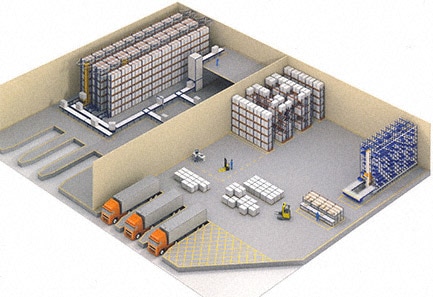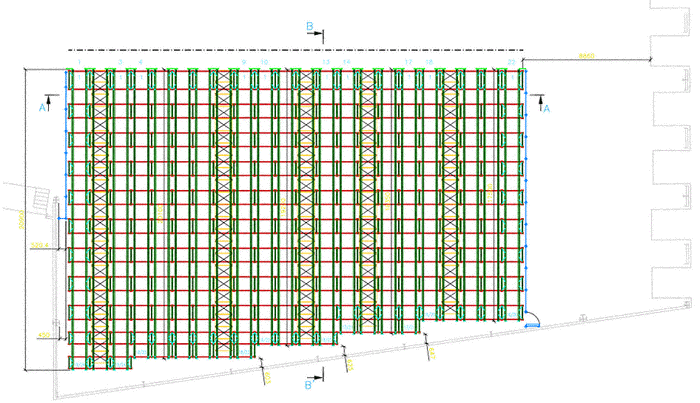
The role of storage installations has evolved over time and they have become strategic factors in the success of many businesses. Warehouses are no longer merely places for storing products; they are now focused on providing service and support facilities to companies of all kinds.
To fulfil this new role, they must be properly designed, with a design project that compiles as much information as possible, so that the installation fulfils its function and can even adapt to any future needs that may arise.
We have compiled the 6 basic factors for the design and layout of a warehouse.
Product: What kind of goods will it hold?
Warehouses are used for storing goods, as part of the supply chain. It is essential that we clearly understand all the characteristics of these goods: the load unit used, its dimensions and minimum/maximum weights. The amounts, types and references of each one of them, their sensitivity to different temperatures, and so on, all determine issues as crucial as the storage system to be used, the required dimensions of the shelves and the installation work areas, among others.

Space: What physical characteristics does the building have?
The dimensions and characteristics of the warehouse infrastructure are essential and must be very accurate information. They are required for the design of shelves, to calculate the capacity of the installations and the distribution of the goods inside the warehouse. There are also limitations that must be taken into account: access, floors, windows, columns, boxes, lines and power lines are all examples of parts of an installation that influence its design. Furthermore, there are the building regulations that directly affect the calculations of metal storage structures.
Equipment: What means are available?
Contrary to what one might think, in many cases the design of a warehouse does not begin with an empty space. Any such elements as racks, lifts or transport equipment must be taken into account and their characteristics analysed. These components influence the design proposal. They make it possible to evaluate which design best adapts to project needs, any limitations present and/or the need to integrate new equipment.
Flow and rotation: How do goods circulate?
By flow we mean the movements performed in logistical operations, such as dispatch, receipt and order preparation processes. By product rotation we mean how often the goods are renewed; that is, a high-rotation product is one that has a high rate of inputs and outputs. Moving loads involves costs, and therefore movements must be minimised, provided that the company operational procedure admits it. Detecting these flows is very important as they contribute to defining the needs of the project and to designing the most efficient installations.
Personnel: What staff is available?
The staff is one of the most important assets of any company. Knowing the number of employees, their level of training, how they are organised, the shifts they work, and other factors, can help refine the proposed design of the warehouse. The introduction of automated components, warehouse management software and health and safety standards mean that nowadays operators are much more specialised than before.
Management and company policy: How is the warehouse organised?
Good warehouse management means that the necessary stock is available, the warehouse provides the best possible service, has a high level of occupancy and optimises internal operation times, among many other things. It is therefore a basic factor.
Understanding how installations are managed allows us to assess their effectiveness and define which processes can be optimised during their design and planning. For example, a change in the way the shelves are distributed can simplify the picking processes.
Today, the trend is increasingly geared towards professional facilities using warehouse management software (WMS) to ensure the control of all these processes.
Each of these factors influences the design to a greater or lesser extent, in accordance with the needs and characteristics of each business.
At Mecalux, our commitment is to provide the best response to the established requirements at all times and that is why obtaining the most accurate information possible is a fundamental element.
